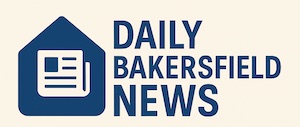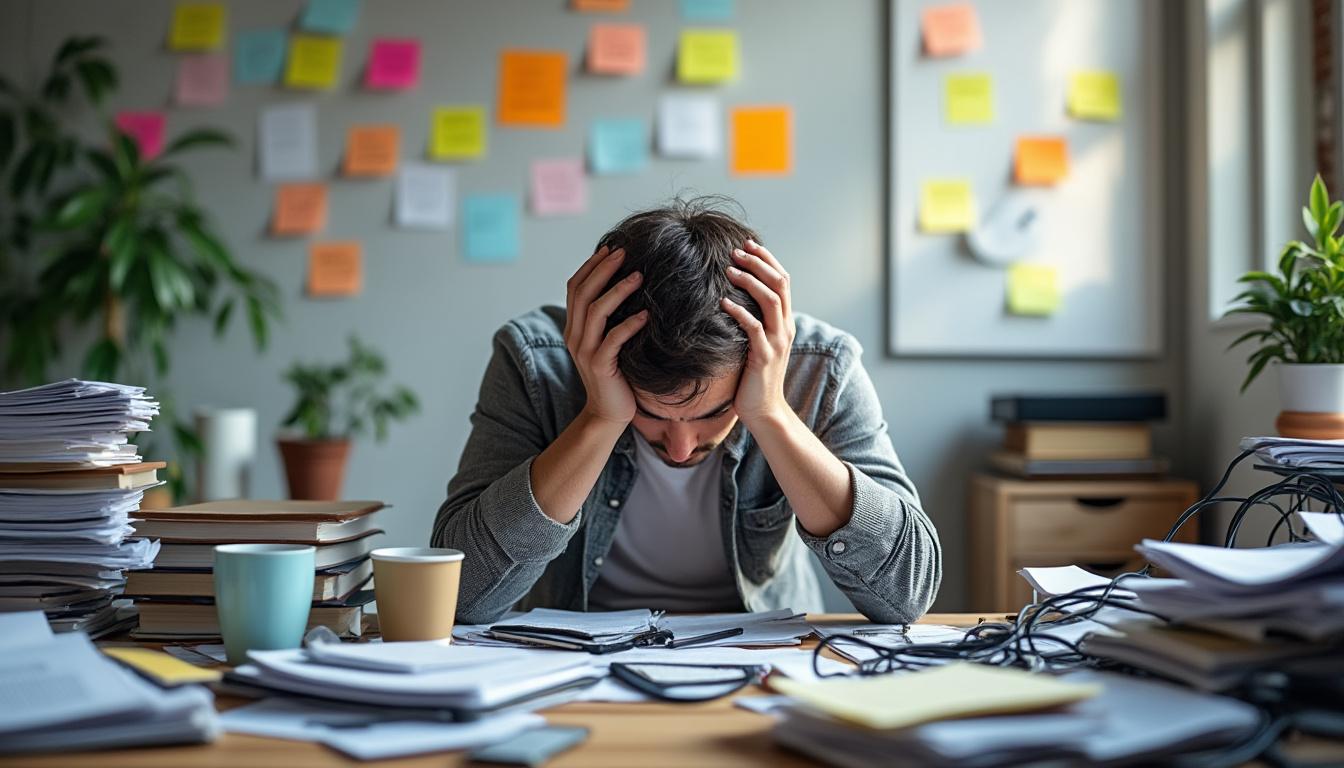In the relentless pace of modern life, clutter in living and working spaces often mirrors the chaos within the mind. As digital distractions multiply and possessions accumulate, many individuals grapple with an unseen but pervasive burden: the stress fueled by disorder. This connection between clutter and stress is not merely anecdotal but is increasingly substantiated by scientific research exploring its impact on our mental and physical well-being. From the obsession with retaining sentimental items to the overwhelming volume of daily tasks, clutter acts as an unspoken trigger for anxiety and reduced productivity. Entrepreneurs, professionals, and homemakers alike find themselves caught in this cycle, seeking ways to simplify and create calm within their environments. In this comprehensive analysis, the subtle yet powerful link between clutter and stress unfolds, revealing practical strategies inspired by methodologies like the Neat Method, Marie Kondo’s principles, and the tranquil appeal of Zen Spaces to reclaim balance amid the mess. Each section delves deeper into how clutter manifests stress, why it holds such power over us, and how embracing mindful decluttering can usher in a less stressful, more organized existence.
Understanding How Clutter Amplifies Stress: Psychological and Physical Insights
Clutter, characterized by the accumulation of unnecessary items and disorganization, serves as a constant visual reminder of incomplete tasks and obligations, often igniting a cascade of stress responses. Scientific findings pinpoint areas in the brain, specifically the anterior cingulate cortex and insula, that become hyperactive when individuals attempt to part with possessions, especially those tied to emotional memories. This neurological tension creates a paradox where letting go feels like a form of pain, fueling the retention of items that contribute to clutter.
The psychological burden of clutter reaches beyond mere visual disorder. It acts as a physical manifestation of the burdensome “to-do lists” in our minds, cluttering cognitive space and impairing decision-making. The overwhelming presence of clutter triggers what experts term “decision fatigue,” a state where the brain’s capacity for further choices diminishes, leading to procrastination and heightened anxiety.
Physically, cluttered spaces may harbor dust, allergens, and pose safety risks such as tripping hazards, compounding stress by threatening health and wellbeing. Additionally, environments overloaded with possessions can disrupt one’s capacity to focus, ultimately diminishing productivity and interfering with restful sleep, as documented in contemporary studies exploring environmental psychology and wellness.
- Visual Overload: Excess items bombard the sensory system, undermining concentration.
- Decision Paralysis: Too many choices exacerbate stress and mental fatigue.
- Emotional Entanglement: Sentimental items create attachments that complicate letting go.
- Health Hindrance: Dust and allergens in cluttered spaces contribute to physical discomfort.
- Risk of Accidents: Items scattered in living areas increase fall hazards.
| Aspect | Effect of Clutter | Resulting Stress Factor |
|---|---|---|
| Neurological | Heightened brain activity linked to pain when parting with possessions | Emotional resistance to decluttering, prolonged stress |
| Cognitive | Impaired decision-making and reduced focus | Increased anxiety, procrastination |
| Physical Environment | Accumulation of physical barriers and allergens | Health issues, safety concerns, physical stress |
| Emotional | Attachment to items based on identity and memories | Guilt, anxiety, feelings of loss and overwhelm |
Such insights emphasize the integral relationship between clutter and stress, highlighting why professionals recommend integrating decluttering into personal self-care routines, as discussed in sources like the comprehensive self-care routine guide. The physical and mental liberation from clutter not only simplifies space but cultivates a calm that benefits holistic health.
Emotional and Identity Factors in Clutter: Why Letting Go Is So Difficult
The emotional complexity behind clutter is often underestimated. Beyond the physical mess, clutter harbors latent feelings of guilt, nostalgia, identity struggle, and anxiety. Possessions tethered to past achievements, relationships, or aspirations weigh heavily on owners, causing stress through the fear of losing parts of themselves or their history.
This emotional entanglement is at the core of the difficulties many encounter when attempting to simplify their environment. Retaining possessions reflects an unconscious effort to maintain identity consistency, thereby deepening the psychological challenges of decluttering. For example, someone holding on to clothes they no longer wear might be psychologically clinging to a version of themselves they aspire to be, rather than who they currently are.
Moreover, the overlap between clutter and self-worth can distort perceptions. Individuals may feel ashamed or less competent when surrounded by mess, affecting confidence and mental resilience. This sense of diminished self-esteem can create a feedback loop wherein stress from clutter impedes motivation to change the situation, leading to further accumulation.
- Sentimental Attachments: Emotional memories linked with objects hinder discarding process.
- Identity Projection: Items represent aspirational selves, complicating detachment.
- Self-Esteem Impact: Cluttered environments can reduce feelings of competence and worth.
- Guilt and Anxiety: Worries about judgment from visitors or family members intensify distress.
| Emotional Factors | Impact on Decluttering Process | Resulting Stress Symptoms |
|---|---|---|
| Attachment to Memories | Reluctance to discard sentimental items such as photographs or heirlooms | Emotional distress, procrastination |
| Fear of Losing Identity | Holding onto possessions that symbolize self-image and aspirations | Stress related to self-worth, denial of current circumstances |
| Social Judgement | Concern about perceptions of mess by others | Anxiety, social withdrawal |
Modern decluttering philosophies such as those endorsed by the Marie Kondo and Home Edit approaches emphasize emotional mindfulness, encouraging individuals to simplify by focusing on sparking joy and aligning surroundings with true personal values. Integrating these concepts fosters a more compassionate and effective journey toward less cluttered living spaces.
Strategies to Overcome Clutter-Induced Stress: Practical Steps and Methods for Organizing
Addressing the stress caused by clutter requires deliberate, mindful strategies that respect emotional intricacies while promoting actionable progress. Effective decluttering is often less about rapid purging and more about gradual, structured change that cultivates calm and order. Embracing concepts from storage innovators like Container Store and organizational systems like the Neat Method can simplify decluttering into manageable tasks.
Key strategies to reduce clutter-induced stress:
- Start Small: Focus on one drawer, shelf, or area at a time to avoid overwhelm.
- Regular Routine: Integrate decluttering into weekly or monthly habits to maintain control and prevent buildup.
- Designate “Homes” for Items: Assign consistent storage spaces for belongings to simplify finding and returning items.
- Release Perfectionism: Accept that the goal is functional calm, not flawless aesthetics.
- Seek Support: Collaborate with friends, family, or professionals when necessary to manage emotional or physical challenges.
Beginning with accessible spaces like kitchens and bedrooms is especially impactful. The kitchen, often the heart of the home, benefits immensely from organized spaces, which save time and reduce stress during meal preparation—as highlighted in helpful hacks shared on kitchen organization resources. Likewise, simplifying the bedroom promotes better sleep quality, an important factor for managing overall stress levels, as in strategies recommended here sleep better tips.
| Strategy | Action Steps | Expected Benefit |
|---|---|---|
| Small Start | Declutter single drawer or shelf first | Reduces overwhelm, builds momentum |
| Regular Schedule | Set weekly or monthly decluttering sessions | Maintains order, prevents stress buildup |
| Item Homes | Create designated spaces for items | Improves organization, facilitates maintenance |
| Perfectionism Release | Focus on ‘good enough’ solutions | Reduces anxiety, encourages progress |
| Social Support | Enlist help from friends or professionals | Alleviates emotional burden, accelerates process |
Incorporating these techniques also aligns with minimalist philosophies, such as the Less Is More approach, which encourages simplifying possessions to create Zen Spaces that nurture mindfulness and serenity in daily life. Tools and storage solutions available through outlets like the Container Store provide ample support for maintaining neat, functional environments.
Digital Clutter and Mental Load: Expanding the Concept Beyond Physical Spaces
In 2025, the notion of clutter extends well beyond physical possessions to encompass digital environments and mental load, which significantly contribute to stress. An overflowing email inbox, countless browser tabs, and disorganized digital files can provoke anxiety equal to or greater than physical mess. The mental strain associated with managing digital distractions is a growing concern in fast-paced professional and personal contexts.
Evidence from behavioral studies indicates that persistent digital clutter drains cognitive resources, impedes productivity, and affects emotional well-being. Addressing this requires the same mindfulness applied to physical decluttering but tailored to the virtual domain. Techniques such as the “Inbox Zero” practice, regular digital audits, and the strategic use of digital breaks counterbalance the chaos of modern technology.
- Curate Digital Workspaces: Reduce open tabs to essential items using browser extensions or minimalist browsing habits.
- Streamline Communication: Manage emails with filters and scheduled checking to prevent overwhelm.
- Organize Files Strategically: Apply clear naming conventions and folder hierarchies to reduce search time and frustration.
- Mindful Digital Consumption: Limit engagement with negative or stressful online content to protect mental health.
- Utilize Tools: Employ apps and platforms designed to support focus and digital well-being.
| Digital Clutter Aspect | Stress Source | Mitigation Strategies |
|---|---|---|
| Email Overload | Anxiety from unaddressed messages | Filters, scheduled checking, Inbox Zero method |
| Browser Tab Excess | Cognitive distraction and decision fatigue | Limit open tabs to 3 or fewer, use read-it-later apps |
| Unorganized Files | Frustration and time loss searching documents | Clear folder structure, consistent naming |
| Negative Content Exposure | Mental stress and mood deterioration | Mindful content curation and digital detoxes |
Just as cultivating physical spaces influences mental clarity, creating digital sanctuaries with intentional choices supports a calm, focused mindset, an essential principle among the digital-age advice shared by leading wellness experts in 2025.
Implementing Sustainable Minimalism: Lifestyle Practices for Long-Term Stress Reduction
Beyond sporadic tidying or intense decluttering sessions, the relationship between clutter and stress calls for a sustainable lifestyle orientation toward minimalism and mindful consumption. The philosophy of “Less Is More” extends into daily habits, purchasing decisions, and environmental interactions, cultivating ongoing clarity and calm.
Practicing mindful acquisition prevents clutter from accumulating, while adopting systems for organizing essentials reduces mental and physical load. Creating Zen Spaces imbued with intentional design and simplicity contributes significantly to emotional wellbeing.
Recommended sustainable minimalism practices include:
- Evaluate Needs Versus Wants: Before acquiring, ask if the item adds value or joy consistent with personal goals.
- Embrace the Neat Method: Regularly review belongings with a focus on utility and emotional resonance.
- Schedule Periodic Spring Cleaning: Use checklists and routines, like those outlined in comprehensive spring cleaning guides, to maintain order without overwhelm.
- Optimize Storage Solutions: Invest in adaptable containers and smart storage to accommodate belongings neatly.
- Practice Digital Mindfulness: Regularly reassess digital engagements to avoid mental overload.
| Lifestyle Practice | Focus Area | Benefits |
|---|---|---|
| Mindful Acquisition | Prevention of unnecessary possessions | Reduced clutter, enhanced satisfaction |
| Neat Method Application | Regular evaluation of possessions | Improved organization, emotional ease |
| Scheduled Cleaning | Consistent environment maintenance | Lower stress levels, sustained calm |
| Storage Optimization | Efficient use of space | Easy access, visual tidiness |
| Digital Mindfulness | Balanced technology use | Better focus, mental clarity |
Implementing these practices in harmony with philosophies promoted by organizations such as ClutterBug and inspired by methods of Marie Kondo supports not only a decluttered environment but a resilient mindset capable of navigating daily demands. For example, integrating tips found in detailed guides on organizing small kitchens can transform high-usage spaces into areas of calm and efficiency, as shown in kitchen organization articles.
Ultimately, embracing minimalism as a lifestyle requires patience and ongoing intention, but offers profound returns—transforming homes and minds into sanctuaries of calm amidst modern demands.

